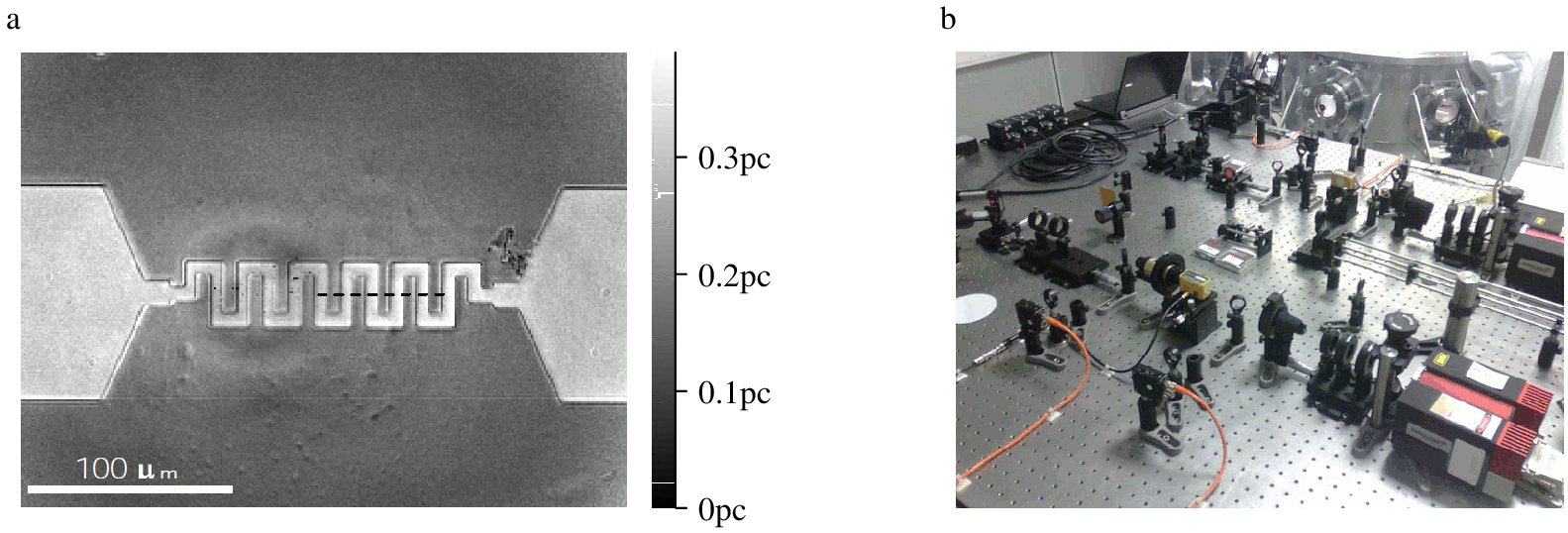C. Boué, S. Holé, C. Filloy
Instruments have been developed for measuring in continuous or harmonic regime the temperature map induced by a punctual source (for instance a laser beam focused on the sample surface) or larger sources such as flash lamps. The measurements are made without contact by a rapid infrared camera coupled to a computer. When samples are periodically heated, one part of the temperature evolution is synchronized with the excitation but another part, a slower one, is due to dissipation. We use a lock-in module for estimating the amplitude and phase of the temperature at the frequency of the heating. Automatic detection of surface cracks is one of the major result of the period, and the detection process is currently under consideration for a patent application. It is particularly useful in aircraft and nuclear domains as a workaround for bleeding. In the framework of TOCATA project (FUI number 7), active thermography concept and lock-in technique are used for detection cracks. Thermal excitations have been judiciously adjusted and image processing can directly show cracks from thermal images. A result is presented in Figure 1.

- Fig 1: Automatic crack detection. Left is a continuous infrared image, surface irregularities prevent the crack detection. Middle is the infrared image locked synchronized with the heating source. Thermal defects are clearly visible, among them a crack. Right is the result of the automatic detection algorithm which detect only the crack.
Infrared imaging have also been used for determining the thermal properties of materials. Generally thermal diffusivity, thermal conductivity and thermal effusivity are important parameters for materials. But though it is relatively simple to measure thermal diffusivity, it remains quite complex to estimate thermal conductivity. We have proposed a simple and efficient way to estimate that parameter by enforcing convective or diffusive measurement conditions using a Peltier module while measuring the surface temperature with an infrared camera. Data analysis considering measurement conditions allows thermal diffusivity and conductivity to be estimated without contact with a good accuracy.
We have progressively reduced our implication in photo-reflectance thermal imaging though we have participated to important results. Photo-reflectance is a non contact optical method using the local reflectivity variations induced by heating to infer temperature mappings. Owing to the wide range of usable wavelengths, various types of information can be retrieved about the temperature of integrated circuits. In the visible range, the technique is now well established. It can probe temperatures through several micrometers of transparent encapsulation layers, with sub-micron spatial resolution and 100 mK temperature resolution. In the ultraviolet range, dielectric passivation layers are usually opaque and the temperature on the surface of that layer can be obtained independently of the encapsulation thickness and of the underlying materials. Near infrared light allows the measurement of the temperature at the interface between the substrate and the active layers with a spatial resolution from 1.7 µm down to 440 nm when using a silicon lens. The combination of the visible, ultraviolet and near infrared illuminations provides a clear view of the thermal processes in complex three dimensional structures of operating integrated circuits. As an illustration Figure 2a shows measurement in the near infrared range through a 500 µm thick silicon substrate.

- Fig 2 : Thermal image of a gold resistor dissipating 609 mW, obtained through the 500 µm silicon substrate with a 50-magnification 0.6-numeric-aperture objective. The resolution measured along the dotted line is 1.7 µm, which is the diffraction limit. Near the resistor, the silicon temperature is 27 K.

